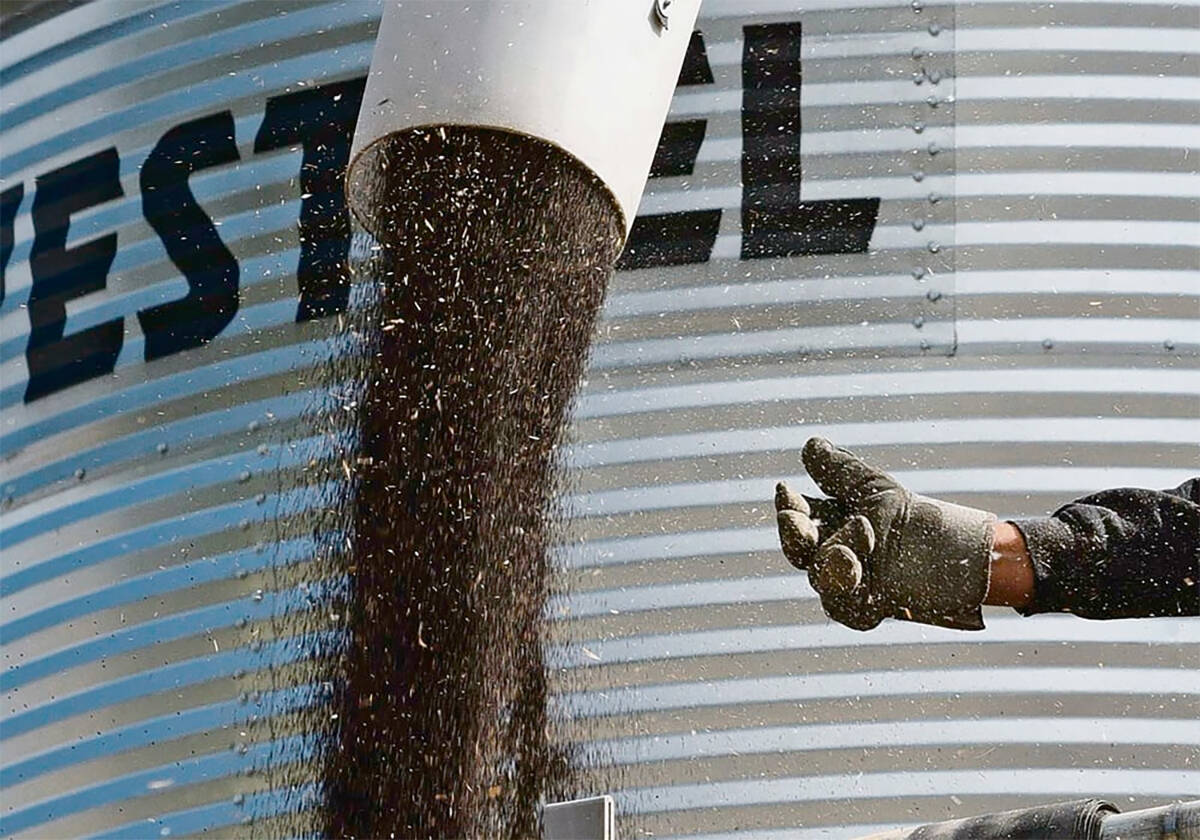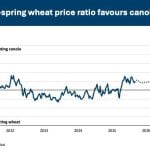Farmers in Western Canada should expect a modest increase in long-term borrowing rates beginning next year, says Scotiabank’s chief economist.
Warren Jestin told a business audience in Saskatoon that Canada’s cost of borrowing over three-, five- and 10-year terms is likely to increase in step with anticipated increases in the U.S. Federal Reserve’s central bank rate over the next two years.
The U.S. Federal Reserve is ex-pected to gradually increase the central bank rate, with many analysts expecting the first rate hike next month.
Read Also

Farmers urged to be grain-safe this fall
Working around grain bins comes with risk, from farmers falling to drowning in grain: Experts have five tips to help avoid grain-related accidents this harvest.
Additional increases are likely in 2016 but will be implemented only if the U.S. economy continues to show positive growth prospects.
“As the federal reserve begins to increase short-term interest rates, the costs of borrowing over three- and five-year terms will also rise,” Jestin said.
“(In Canada,) that means your cost of borrowing three-year money, five-year money, 10-year money also goes up because our cost of borrowing is very, very closely tied to the U.S.”
In a global economic update dated early November, Scotiabank said it expected the Canadian dollar to remain in a range of US72 to 73 cents next year, with values increasing to 74 to 79 cents in 2017.
Central bank rates in the United States will reflect the relative strength of the American economy.
Scotiabank projections show the U.S. central rate increasing by more than a full percentage point to 1.5 percent before the end of 2016 and approaching 2.5 percent in the last half of 2017.
By comparison, the central rate in Canada is expected to remain flat for most of next year.
Jestin said anticipated strength in the American economy and a relatively weak Canadian dollar will bode well for exports to the U.S.
The U.S. economy is heating up after years of muted growth and has emerged as the obvious choice for global investors who are wary of economic and political instability in other parts of the world, he said.
Instability in Ukraine and Greece, combined with recent terrorist attacks in France and other countries, has contributed to a cautious investment environment in Europe.
This caution, when combined with a weak European currency and historically low interest rates, suggest continuing economic vulnerability in Europe or outright financial crisis.
“Talk about negative interest rates (in Europe) … really underlies the degree of vulnerability and fragility in that particular economy,” Jestin told a Nov. 16 event hosted by the Saskatchewan Trade and Export Partnership.
As well, instability in Chinese markets and historically moderate annual growth projections have also contributed to a more conservative investment climate.
A decade or so ago, China’s economy routinely grew at an annual rate of more than 10 percent.
The country’s growth rate is now being pegged at 6.9 percent this year, 6.4 percent in 2016 and 6.2 percent in 2017.
That is still one of the highest growth rates in the world but a far cry from the double digit rates the world had grown accustomed to in the early 2000s.
Against that backdrop, the U.S. economy has emerged as a shining star.
“A couple of years ago, maybe three years ago, the U.S. looked like it had a ton of problems,” Jestin said.
“The view at that time was that the emerging markets were going to be the markets of the future, (and) in that environment, the U.S. dollar tended to be weak and U.S. financial markets tended to be vulnerable. But if you fast forward to today, the story is very, very different.”
Jestin said the performance of the U.S. economy over the next few years will have a significant impact on economic conditions in Canada, particularly when it comes to Canadian export volumes, currency rates and borrowing costs.
The U.S. is expected to contain its annual deficit at less than $500 billion this year, which is down from more than $1 trillion during the previous three years.
It is likely to result in more government spending, reduced taxation and GDP growth rates of 2.6 to 2.7 percent in 2016 and 2017.
“Pent up consumer demand in the United States is being unleashed,” Jestin said.
“The U.S. government is now part of the expansion process for the first time in a very, very long time.”
Contact brian.cross@producer.com















